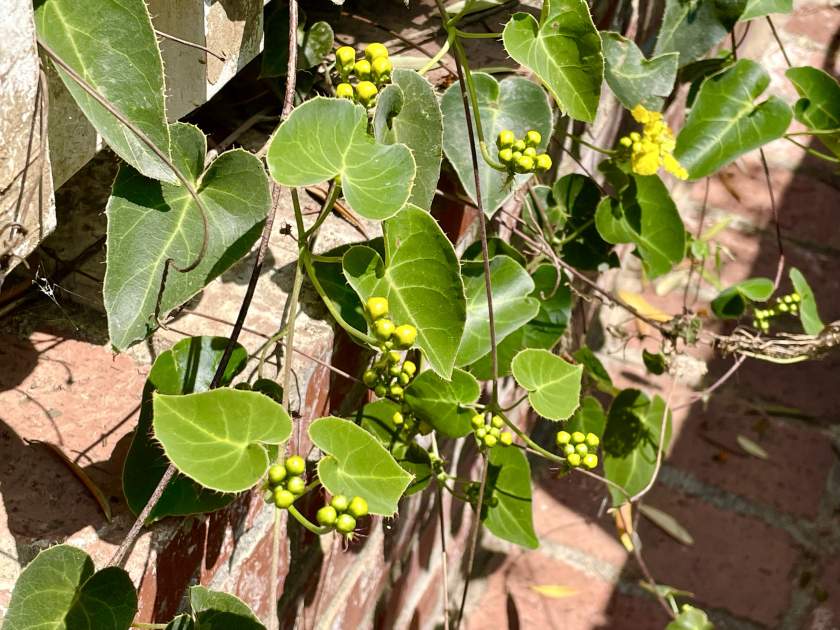Malpighiaceae is a family of flowering plants that is widespread in tropical and subtropical regions around the world. It is named after Italian botanist Marcello Malpighi, who made significant contributions to the field of plant anatomy. The family belongs to the order Malpighiales and encompasses approximately 75 genera and 1,200 known species.
Members of the Malpighiaceae family are diverse in their growth habits, ranging from shrubs and small trees to climbing vines. They exhibit a wide array of leaf shapes and flower structures, making them a fascinating group of plants for botanists and plant enthusiasts.
One distinctive feature of many plants in the Malpighiaceae family is the arrangement of their flowers in clusters or racemes. The flowers are typically small and showy, often displaying vibrant colors such as red, orange, yellow, or purple. They may have intricate petal patterns or specialized structures that attract specific pollinators, such as bees or butterflies.
The leaves of Malpighiaceae plants vary in shape, size, and texture. They can be simple or compound, with entire or toothed margins. Some species have glandular structures on the leaves that produce oils or resins, which can have various functions such as attracting pollinators or deterring herbivores.
Many plants in the Malpighiaceae family produce fruits that are distinctive and often unique. These fruits come in various forms, such as capsules, drupes, or samaras. Some species have fruits with wings or hooks that aid in dispersal by wind or attachment to animal fur.
Several genera within the Malpighiaceae family are of economic importance. For example, the genus Malpighia includes the Barbados cherry (Malpighia emarginata), which produces small, edible fruits rich in vitamin C. Another notable genus is Hiptage, which includes Hiptage benghalensis, a popular ornamental vine known for its fragrant flowers.
In addition to their ornamental and economic value, some plants in the Malpighiaceae family have traditional medicinal uses. For instance, several species of Banisteriopsis are used by indigenous communities in South America to prepare psychoactive beverages known as Ayahuasca.
Overall, the Malpighiaceae family represents a diverse group of plants with intriguing characteristics and ecological significance. From their fascinating flower structures to their unique fruits and leaves, these plants contribute to the biodiversity and beauty of tropical and subtropical ecosystems.
Malpighiaceae is known by a number of other common names, including:
- Barbados-cherry family
- Grapefruit family
- Inkberry family
- Malpighia family
- Passionflower family
- Soapberry family
- Urticaceae family
The genera in Malpighiaceae Family include:
Acridocarpus
Adelphia
Adenocalymma
Aegiceras
Agonandra
Alseis
Amorimia
Amphipterygium
Androya
Anthurium
Antidesma
Aporosa
Aracamunia
Arcytophyllum
Aspidopterys
Aspicarpa
Banisteriopsis
Barnebya
Batesia
Blackwellia
Blakea
Boerhavia
Bomarea
Bunchosia
Byrsonima
Callia
Callaeum
Campomanesia
Cardiopetalum
Carpotroche
Castela
Cecropia
Chorisia
Cissus
Codonorchis
Colletia
Commiphora
Conostegia
Coprosma
Cordia
Crescentia
Croton
Dalbergia
Dalhousiea
Doliocarpus
Dombeya
Duroia
Echinopterys
Ectopopterys
Emmotum
Enterolobium
Erythroxylum
Flabellaria
Galphimia
Gaudichaudia
Heladena
Heteropterys
Hiptage
Hiraea
Houdinia
Humboldtia
Isertia
Janusia
Jocotea
Krameria
Laetia
Lasiocarpus
Leptopus
Lophanthera
Luehea
Lundia
Malpighia
Mascagnia
Maytenus
Micrandra
Microdesmis
Microsteira
Mouriria
Myrciaria
Neoglaziovia
Nertera
Norantea
Ochrocarpus
Ouratea
Ovidia
Passiflora
Perebea
Physocalymma
Peixotoa
Philibertia
Phyllanthus
Plicostyles
Poikilothrix
Polyscias
Prancea
Pseudima
Pseudopterys
Psychetria
Pterandra
Pterogyne
Pterolobium
Rhamnidium
Rhynchophora
Rourea
Ruizodendron
Sabicea
Salpiglossis
Sapindus
Sarcostemma
Schumannia
Scutellaria
Sida
Tetrapterys
Tetrazygia
Thryallis
Triumfetta
Tristellateia
Tritylophora
Turnera
Utricularia
Vantanea
Verrucularia
Wallacea
Wissadula
Xylopia
Zanthoxylum
Zornia

